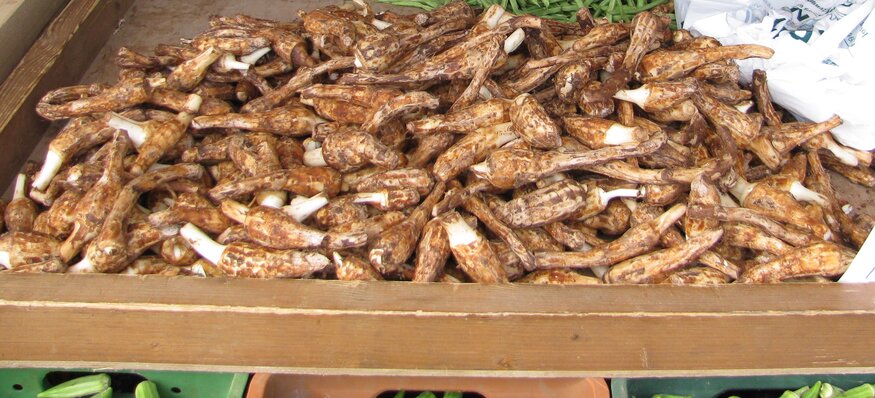Gardens in the South Pacific Ocean

2 December 2014
Sometimes you can find the most telling information in a newspaper not in the articles, but in the ads. A supermarket circular in the South Pacific tells its own story:
Mackerel in oil, $3.
30; 4 pound can of corned beef, $3.75;
Sugar Crackers, $3.95;
Pringles, $4.50;
11 pound bag of rice, $18.95.
Fiji, 19 September 2014
Visit the average supermarket in Fiji or Tonga on a tight budget, and you’ll be choosing between options like these. It’s no surprise that the residents of Pacific islands have struggled to maintain healthy diets. As more and more people move off the land into cities and the tourist industry, cheap imported foods have taken over from the traditional staples of Pacific life. The result is a modern health disaster: the highest percentage of obese and overweight residents in the world, surpassing 90% in some countries, accompanied by astronomical rates of diabetes and other diet-related illnesses. On some islands in the South Pacific, life expectancy is actually falling.
This is especially tragic for those who know the old island gardens. The crops of the Pacific are wonderfully diverse and healthy, with banana, coconut, breadfruit and assorted fruit trees casting their shade over taro, yams and sweet potatoes. With islands and cultures scattered across vast expanses of open ocean, the region is a natural laboratory for diversity found nowhere else. Such hyper-local crops are also easily lost, however. In the case of taro – a plant with a low fat, nutritious root and leaves bursting with protein and vitamins – local diversity has dwindled fast. At the same time more and more people are abandoning their traditional crops, well adapted and nutritious types of taro are threatened by introduced disease, drought and rising sea levels.
The difficulty of saving this diversity for the future begins with the task of finding it, sprinkled as it is across many thousands of islands. Making this more challenging is the fact that nearly all of these Pacific crops can’t be saved as seeds, only as living plants or – using more advanced technologies – as pieces of tissue in glass vials. The Secretariat of the Pacific Community (SPC) takes on this challenge at its Centre for Pacific Crops and Trees (CePaCT), based in Fiji. The Centre holds more than 2,000 accessions of Pacific staples, including a taro collection with more than 1,000 types. From here it distributes thousands of plants back to growers every year. In 2014, for instance, varieties of taro and sweetpotato from CePaCT’s “climate-ready” collection were sent to Tonga for households who had lost everything in the country’s worst, ever cyclone.
The Crop Trust supports the long term conservation of the SPC’s taro and yam collections with in perpetuity grants, ensuring the constant maintenance required by these living collections will continue as long as they are needed. The Crop Trust has further brought CePaCT together with institutes in nine Pacific countries to gather hundreds more examples of these islands’ nutritious crops and duplicate them in the collection for the long term. Keeping the genetic basis of the Pacific garden alive will also keep alive hope for a homegrown solution to the region’s health crisis.
Category: Nutritional Security
